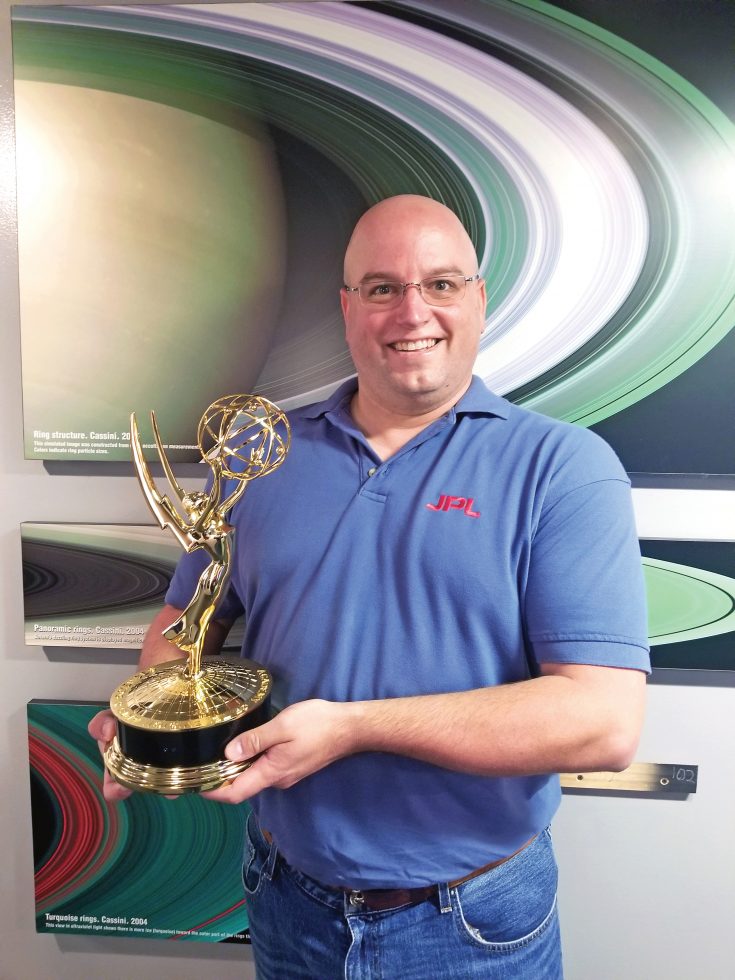Kevin Gill, Class of 2011G
The rings and moons of Saturn are a sight to behold. The most recent images of this planet and its atmosphere, said to be the clearest yet, were made possible, in part, by Kevin Gill.

Building a Career with NASA
Kevin Gill earned a bachelor’s degree while working as a software engineer and developer for Fidelity Investments. After graduation, he wanted to break into more advanced software development roles, so he began researching graduate computer science programs that fit his needs.
“Rivier offered a strong graduate computer science program and a schedule that would easily accommodate my career,” he says.
Exploring New Dimensions
Today, Kevin is a science data software engineer for NASA’s Jet Propulsion Laboratory. This research facility carries out robotic space and Earth science missions, like the Cassini mission to Saturn. He credits much of his professional growth to the graduate program in computer science at Rivier.
“Rivier taught me many of the algorithms and development practices I still use today at NASA,” he says. “In fact, I can trace the lineage of code currently running on NASA systems directly to my final master’s project.”
One of Kevin’s most memorable projects involved writing a compiler (a program that translates one programming language to another) and a virtual machine runtime environment (a software program designed to run other software). He had to create human-readable language and a compiled binary (non-text) specification. To determine his success, he had to feed these systems code provided by his professor.
“It was a sort of task I long felt was beyond my capabilities and to have mastered it with relative ease truly demonstrated how much I had progressed,” he recalls.
The computer science faculty was also a big part of Kevin’s experience.
“The largest influence over my education was Dr. Vladimir Riabov, Professor of Computer Science and Department Coordinator. His wisdom and guidance proved instrumental to my success,” he says.
Personal and Scientific Discovery
NASA’s overall mission is without a doubt exciting, but Kevin says his day-to-day is pretty typical.
“It’s like most any other software development job,” he explains. “The day includes planning and design meetings and work time. I need to prioritize and switch among several projects, depending on deliverable deadlines.”
Kevin feels his work at NASA—building applications and tools for scientific research—benefits society. The systems he helps create target a variety of specializations, including climate, oceanography, asteroids, and planetary science.
“I enjoy the creative process and the challenge of designing and developing new technologies to aid in analysis and discovery,” says Kevin.
As a software engineer and developer for an organization like NASA, Kevin is bound to have some “not-so-typical” days. In 2017, he was selected to process visual data from the final phase of a decade-long exploration of Saturn and its moons, seas, and storms. NASA says of this stage of the project:
“Following a final close flyby of Saturn’s moon Titan, Cassini performed a series of 22 weekly dives between the planet and its rings—The Grand Finale. On its final orbit, Cassini will plunge into Saturn’s atmosphere at tens of thousands of miles per hour, sending back new and unique science to the very end. After losing contact with Earth, the spacecraft burns up like a meteor, becoming part of the planet itself.”
Kevin was a part of that moment.
“For the Cassini mission’s final year in orbit around Saturn, I was processing images for public and scientific consumption,” he says. Kevin and NASA Jet Propulsion Laboratory’s Media Relations and Public Engagement team produced news, website content, educational resources, television footage, live-streamed video, and social media efforts to document and share Cassini’s mission, findings, and final descent into Saturn.
On Sept. 15, 2017, Kevin processed the final images of the spacecraft, which were immediately sent to and published by the media. “These included the final pass by Titan, a view of Enceladus setting behind Saturn, and Cassini’s expected impact location,” he says.
Kevin’s compelling, never-seen-before images highlighted Cassini-Huygens’ scientific and engineering achievements in the months-long, multi-media campaign.
And the world took notice.
JPL’s imagery, web, and mass media coverage of Cassini’s Grand Finale produced an Emmy nomination from the Academy of Television Arts & Sciences. At the Creative Arts Emmy Awards on September 8, 2018, JPL team’s exceptional work on Cassini’s Grand Finale earned them the Emmy Award for Outstanding Original Interactive Program.
While Kevin continues to explore vast frontiers in outer space and in advanced technologies, he still appreciates the small. He tells future master’s of computer science students to “embrace the personalized attention you receive at Rivier. Get the most out of the access you have to professors and advisors.”
Kevin’s experience demonstrates the exciting and expansive professional opportunities available to computer science graduates. Are you interested in where this degree might lead you? Learn about the M.S. in Computer Science program that prepared Kevin for a career with NASA.
Contact
Office of University Advancement and Alumni Relations
- Telephone (603) 897-8665
- Email alumni@rivier.edu
- Location Learning Commons